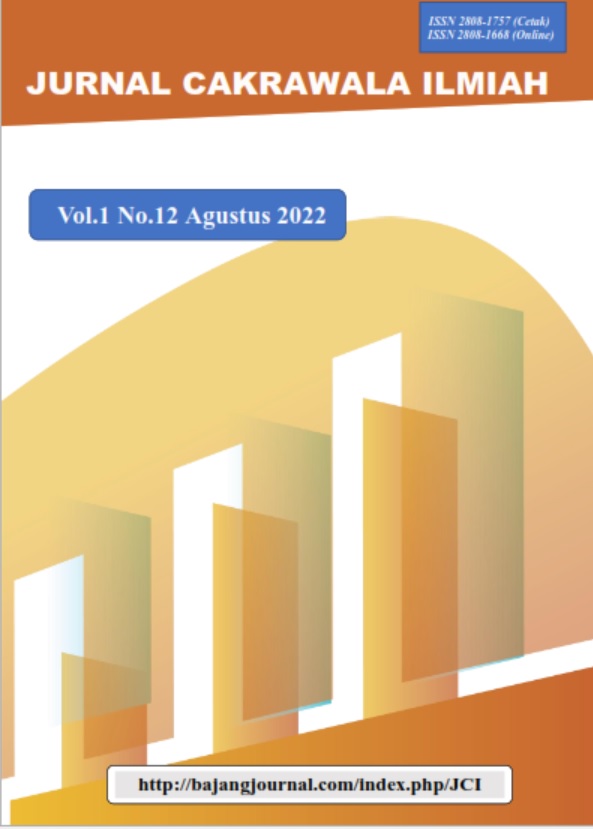ANALISIS PERBANDINGAN PENDAPATAN USAHATANI JAGUNG HIBRIDA DAN LOKAL DI KECAMATAN PASARWAJO KABUPATEN BUTON
DOI:
https://doi.org/10.53625/jcijurnalcakrawalailmiah.v1i12.3778Keywords:
Income Differences, Local And Hybrid MaizeAbstract
This study aims to determine how much income and the comparison of the average farm income of hybrid corn and local corn in Kombeli Village, Pasarwajo District, Buton Regency. This research was conducted in Kombeli Village, Pasarwajo District, Buton Regency. The selection of the research location was determined purposively with the consideration that the area is one of the centers of corn production in Pasarwajo District, Buton Regency. The population in this study were all farmers who cultivate corn, totaling 30 people. The sample was taken as a whole by the census method, namely 30 farmers with Classified Sampling, which was divided into 2 sample groups, namely A was 15 people doing local corn farming and B was 15 people doing hybrid corn farming. The income analysis method is calculated using the formula: TC1 = TFC1 + TVC1, TR1 = Y1. Py1, Pdi1 = TR1- TC1 and the difference in average income between local maize farming and hybrid maize was used by means of the mean value difference test analysis (t test) with 95% confidence level. The results showed that the average local corn income was 6,827,333.33 with a standard deviation of 1103322,687 while the hybrid corn income was 4,310,000 with a standard deviation of 738047,618 with 15 respondents each. There is a difference in the average income of local and hybrid maize farming with a significance value of 0.000 <0.05, so reject H0 or accept H1. This research study serves to add insight and knowledge of farmers in order to increase corn production as a substitute for rice and also maintain food security and preserve local food. As a study material for stakeholders and stakeholders related to corn cultivation so that farmers will be more prosperous
References
Adio dan Olaoye, 2022. Technical Efficiency and Profitability among Maize Based Farmer in Kajola Local Government of Oyo State. International Journal of Research and Innovation in Social Science (IJRISS) |Volume VI, Issue I, January 2022|ISSN 2454-6186.
Djarwanto PS dan Pangestu Subagyo. 1993. "Statistik Induktif". BPFE.
Yogyakarta Edisi Keempat.
Nazir, Moh. 2013. Metode Penelitian. Bogor: Ghalia Indonesia
Sarasutha,IG.P.2002. Kinerja Usahatani dan Pemasaran Jagung di Sentra Produksi. Jurnal Litbang Pertanian. Jakarta.
Sugiyono (2016). Metode Penelitian Kuantitatif, Kualitatif dan R&D. Bandung. Alfabeta.
Soekartawi (2002) Analisis Usahatani. Jakarta: Penerbit universitas Indonesia (UI-Press)
Soekartawi. (2003) Prinsip Dasar Ekonomi Pertanian, Teori dan Aplikasinya. Jakarta Press Rajawali.
Soelistyo. 2001. Dasar-dasar Ekonometrika; Ed 1. Yogyakarta: BPFE.
Tangendjaja,B. dan Gunawan, 1988. Jagung dan Limbahnya Untuk Makanan Temak. Laporan Tahunan Jagung. Badan Penelitian dan Pengembangan Pertanian. Bogor: Pusat Penelitian dan Pengembangan Tanaman Pangan.
Warisno. 2007. Budidaya Jagung Manis Hibrida. Kanisius, Yogyakarta
Downloads
Published
How to Cite
Issue
Section
License
Copyright (c) 2022 Jurnal Cakrawala Ilmiah

This work is licensed under a Creative Commons Attribution-NonCommercial 4.0 International License.
















